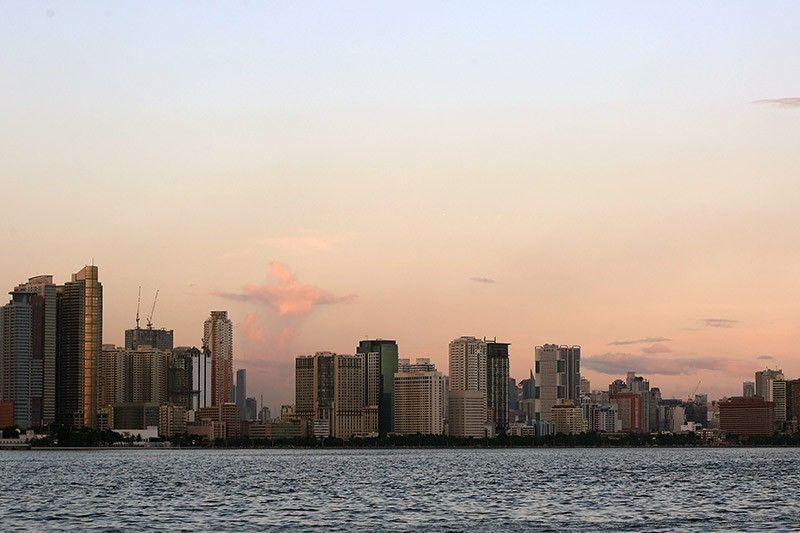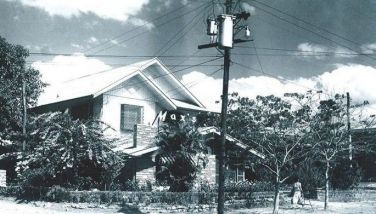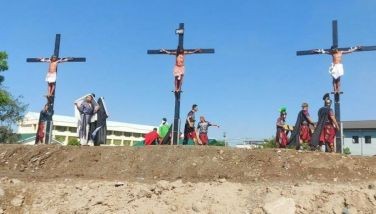Philippine economy

The Philippine Amusement and Gaming Corp. or PAGCOR reports 9.51% year-on-year net income increase to P1.55 billion in the first quarter of 2019 from P1.42 billion.
— Reicelene Joy Ignacio/BusinessWorld
Fitch Ratings has affirmed the Philippines' credit rating at “BBB” with a “stable” outlook considering the country’s “favourable” growth prospects, but it warns that overheating risks “remain in place.”
“The ratings on the Philippines balance favourable growth prospects, lower government debt, and a net external creditor position against lower per capita income levels, a weaker business environment and lower standards of governance compared with its rating category peers,” the international debt watcher says in a statement.
"However, Fitch believes that overheating risks remain in place, highlighted by rapid credit growth and a widening current-account deficit, although the central bank's stated intention is to remain vigilant against developments that could affect the inflation outlook," it adds.
The Bangko Sentral ng Pilipinas mildly hikes its policy rate, as inflation expectations remain elevated.
The policymaking Monetary Board lifts key rate by modest 25 basis points.
The BSP “deemed it necessary to respond with proactive policy action to help temper the risks to the inflation outlook including those emanating from continued uncertainty in the external environment,” it says.
The Bangko Sentral ng Pilipinas on Thursday mildly hikes its policy rate, as inflation expectations remain elevated.
The policymaking Monetary Board lifts key rate by modest 25 basis points.
The BSP “deemed it necessary to respond with proactive policy action to help temper the risks to the inflation outlook including those emanating from continued uncertainty in the external environment,” it says.
The Philippine economy grows even slower in the third quarter, the country’s statistics agency reports.
Gross domestic product — or the value of all finished goods and services produced in the country — eases to 6.1 percent, lower than the upwardly revised 6.2 percent in the previous quarter and 7.2 percent clip posted in the same period last year.
The Bangko Sentral ng Pilipinas hikes its key interest rates by 50 basis points, its biggest rate hike in a decade, in a bid to fight rising inflation.
“The Monetary Board noted that latest baseline forecasts have shifted higher over policy horizon, indicating some risk of inflation exceeding the target in 2019,” central bank governor Nestor Espenilla says.
The Bangko Sentral ng Pilipinas hikes its key interest rates by 50 basis points, its biggest rate hike in a decade, in a bid to fight rising inflation.
“The Monetary Board noted that latest baseline forecasts have shifted higher over policy horizon, indicating some risk of inflation exceeding the target in 2019,” central bank Governor Nestor Espenilla says.
Inflation rises further in July, hitting a fresh high of 5.7 percent from June's 5.2 percent.
Year-to-date, inflation averaged 4.5 percent, still above the central bank's 2-4 percent target range.
Fitch Solutions says inflation poses a “slight risk” to Philippine consumers, adding that the country remains one of the strongest consumer growth markets in Asia.
“The consumer outlook for the Philippines remains bright on the back of a strong economic growth trajectory, high levels of remittance inflows and falling unemployment,” the Fitch Group unit says in a report.
An International Monetary Fund mission expects the Philippine economy to “grow strongly” at 6.7 percent in 2018 and 2019, adding that the medium-term economic outlook on the country “remains favorable.”
However, the IMF team warns that near-term risks have increased, stemming from rising inflation and a “changing external environment.”
“To strike the right balance between growth and macroeconomic stability, policies need to be adjusted to reduce inflationary pressures, while structural reforms should continue to support inclusive growth,” it adds.
Global debt watcher Moody's Investors Service has affirmed its rating on the Philippines at "Baa2," a notch higher than minimum investment grade, and maintained the outlook at "stable."
"The Baa2 rating incorporates a number of very positive credit features, including the high economic strength derived from a large and fast-growing economy, as well as improving fiscal strength based on moderate government debt levels and gains in debt affordability," Moody's says in a statement.
"These are balanced against more negative features which constrain the rating, principally low per capita incomes and, relatedly, still low revenue-raising capacity as compared to similarly rated peer countries," it adds.
The Asian Development Bank retains its growth outlook on the Philippines, but raises its inflation forecast for the country this year.
In a supplement to its Asian Development Outlook 2018 report, the Manila-based multilateral lender keeps its growth projection for the Philippine economy at 6.8 percent and 6.9 percent for 2018 and 2019, respectively.
Meanwhile, the ADB revises its 2018 inflation forecast for the Philippines to 4.3 percent from its previous estimate of 4 percent, before cooling down 3.9 percent next year.
Global debt watcher Fitch Ratings has kept the Philippines’ “BBB” rating, one notch above minimum investment grade, with a stable outlook.
“The Philippines' sovereign ratings balance a favourable growth outlook, government debt levels that are below peer medians, a net external creditor position and policies geared towards maintaining macrostability against lower income per capita and weaker governance and business environment indicators compared with its rating category peers,” Fitch says in a statement.
A higher rating can lower the cost of borrowing in foreign currencies and can increase the country’s ability to attract foreign investment.
Philippine inflation accelerates to 5.2 percent in June from May’s 4.6 percent, beating the central bank’s forecast and market estimates.
As widely expected, the Bangko Sentral ng Pilipinas has raised its benchmark interest rates anew following a similar move last May as inflation expectations "remain elevated" for 2018.
At its policy meeting, the BSP’s Monetary Board raises interest rate on RRP by 25 basis points to 3.50 percent effective June 21. Interest rates on overnight lending and deposit facilities are likewise lifted accordingly.
Philippine inflation in May 2018 accelerates to 4.6 percent, a fresh five-year high for the country.
For the first time in nearly four years, the Bangko Sentral ng Pilipinas on Thursday finally lifts key rates to tame rising inflation.
During the Monetary Board’s third policy review for this year, the central bank decides to raise overnight reverse repurchase rate by 25 basis points from record-low 3.0 percent. Interest rates on overnight lending & deposit facilities are likewise hiked accordingly.
“In deciding to raise policy interest rate, the Monetary Board noted that latest forecasts have further shifted higher indicating that inflation pressures could become more broad-based over the policy horizon,” Governor Nestor Espenilla says.
“The Monetary Board believes that a timely increase in the BSP’s policy interest rate will help arrest potential 2nd round effects by tempering the buildup in inflation expectations,” he adds.
The Philippine economy grew faster in the first three months of 2018, although it missed the government’s target band for the year, the country’s statistics agency reports.
The country’s gross domestic product—or the value of all finished goods and services produced in the country—grows 6.8 percent in the first quarter, faster than the downwardly revised 6.5 percent clocked in the last three months of 2017 and the 6.4 percent expansion rate in the comparable period last year.
The latest growth pace matches market estimates but settled near the low-end of the government’s 7-8 percent target range for 2018.
The Philippines is the third largest remittance recipient in the world in 2017 with $33 billion, a World Bank report states.
Topping the list were India with $69 billion, followed by China ($64 billion), the Philippines, Mexico ($31 billion), Nigeria ($22 billion) and Egypt ($20 billion).
The report adds that payments from immigrants back to their home countries reached a new record in 2017 but the costs of transferring funds also increased.
In a release April last year, the Philippine Statistics Authority said there were an estimated 2.2 million overseas Filipino workers abroad at any time during the period April to September 2016. — AFP
- Latest
- Trending























